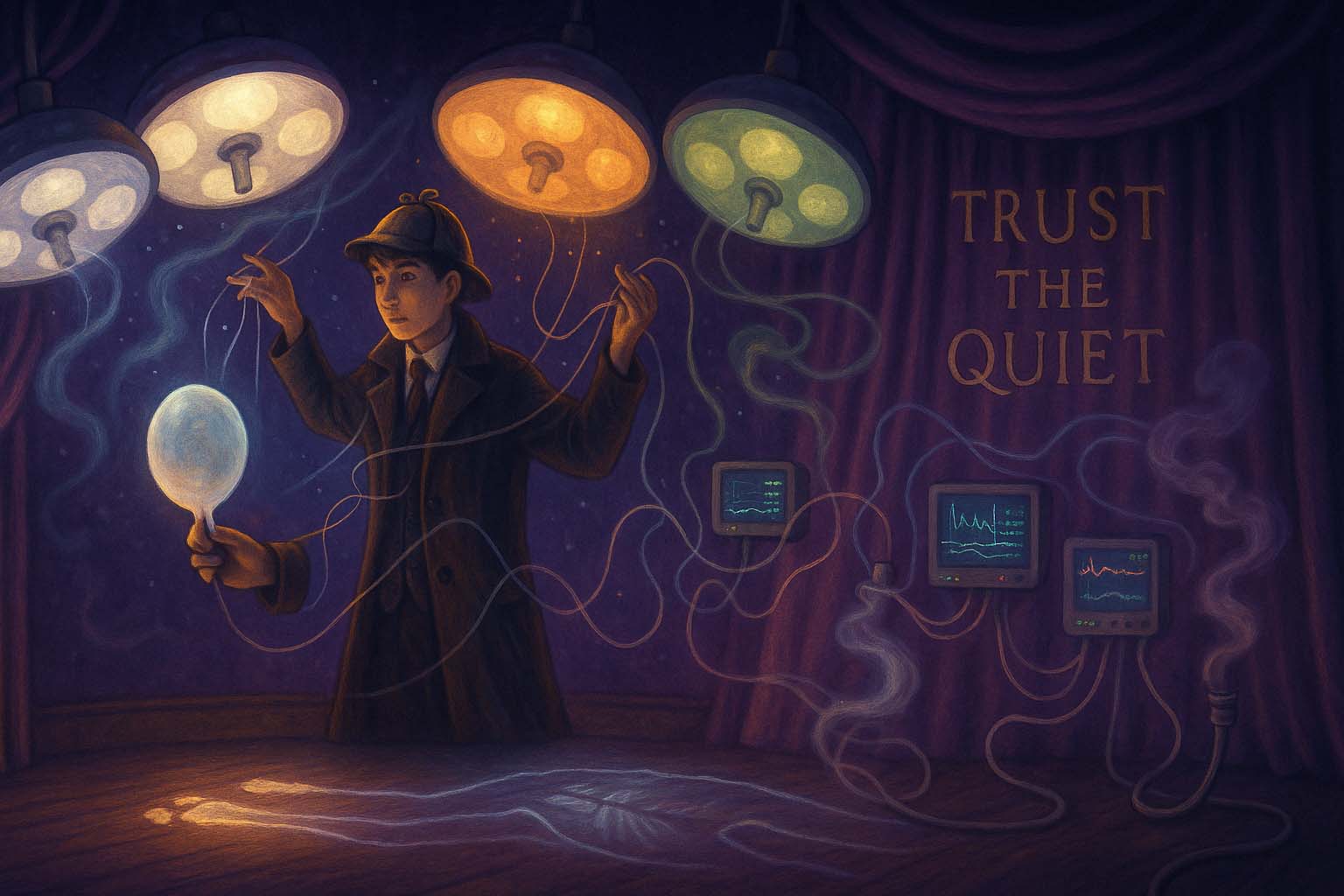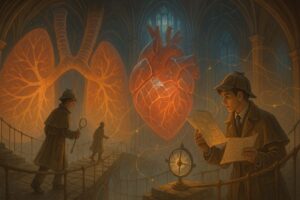
Anaesthesiology
- Posted by admin
- Categories Core Surgical Specialties
- Date May 24, 2025
- Comments 0 comment
The Consciousness Detective’s Domain – Cracking the Cases of Pain, Physiology, and the Space Between Awareness and Sleep
1. Introduction: The Scene of the Specialty
Step into the shoes of an Anaesthesiology sleuth.
This is the domain of invisible mastery—where breath, blood pressure, and brain waves are balanced with milligram accuracy. Anaesthetists are the quiet guardians of surgery, holding patients in suspended stillness while others cut and repair. But beyond the theatre, they manage pain, resuscitate the unstable, and navigate airways like seasoned pilots. Welcome to a world where stillness is engineered, awareness is controlled, and your presence is vital even when you remain almost unseen.
2. Key Mysteries They Solve (Common Roles & Responsibilities)
These detectives specialise in solving cases involving:
- Perioperative Medicine – preparing high-risk patients for surgery, maintaining homeostasis throughout.
- Airway and Ventilation Management – intubating, oxygenating, and ventilating with finesse.
- Acute and Chronic Pain Relief – from nerve blocks to patient-controlled analgesia to spinal interventions.
- Critical Resuscitation – managing peri-arrest patients, massive haemorrhage, and rapid sequence induction.
Each case is a symphony of pharmacology, physiology, and fine-tuned vigilance—executed in real time under pressure.
3. Their Trusted Tools & Techniques
Every detective has their kit—and in Anaesthesiology, tools may include:
- Anaesthetic Agents and Vapours – inducing and maintaining unconsciousness with depth and precision.
- Ventilators, Laryngoscopes, and Video Tools – securing airways and supporting breathing.
- Regional Anaesthesia – spinal, epidural, and nerve blocks for targeted control.
- Monitoring Systems – tracking ECG, capnography, oxygen saturation, and invasive pressures second by second.
This is the quiet science of control—the art of balancing life with technology and touch.
4. The Charms of This Field: Why It Captivates the Curious
- Instant Feedback Loop: Every drug, intervention, or decision has a measurable response.
- Foundational to Every Surgery: No operation happens without your presence.
- Wide Reach: You work in theatres, ICUs, emergency bays, obstetric wards, and pain clinics.
- Calm in Crisis: You’re often the first called and the last to panic.
This is where stillness is an achievement—and stability is your craft.
5. Challenges: The Toughest Cases They Face
- High Stakes, Low Margin for Error – One miscalculated dose or misplaced tube can have dire consequences.
- Under-Recognition – Your successes are quiet; your failures are glaring.
- Rapid Thinking Under Pressure – Crisis situations require swift decisions with limited information.
- Complex Comorbidities – Patients often arrive for surgery with unstable or unclear risk factors.
But the seasoned anaesthetist knows: you are not in the spotlight, but you control the stage.
6. Famous Cases and Hallmark Clues
- The “Classic Presentation” – Anticipating difficult airway in a patient with obesity and OSA: plan for awake fibreoptic intubation.
- The “Zebra” – Sudden intra-op hypotension and flushing: unrecognised anaphylaxis to muscle relaxant.
- The “Aha Moment” – Unexpected tachycardia and rising CO₂: malignant hyperthermia in genetically susceptible patient.
7. Your Training Trail: How to Join the Investigation
To become an Anaesthesiology detective:
- Start with general medical training, then specialise in anaesthesia and perioperative medicine.
- Learn respiratory and cardiovascular physiology inside out.
- Practise crisis management, pharmacokinetics, and real-time team coordination.
- Train your mind to remain composed—your patients will be unconscious, but your decisions are wide awake.
Whether delivering epidurals, stabilising the ICU, or ensuring smooth emergence from surgery, you’re the hand behind the healing.
8. Final Words: The Signature of the Anaesthesiology Detective
Anaesthesiology detectives work at the edge of awareness and the core of stability.
They navigate between silence and crisis, holding lives in careful suspension.
They are precise, prepared, and profoundly present—watching every breath so surgeons can do their work, and patients can return safely.
So if you’re drawn to quiet mastery, critical thinking, and invisible yet indispensable care—
then this is your clinical calling behind the curtain of consciousness.



